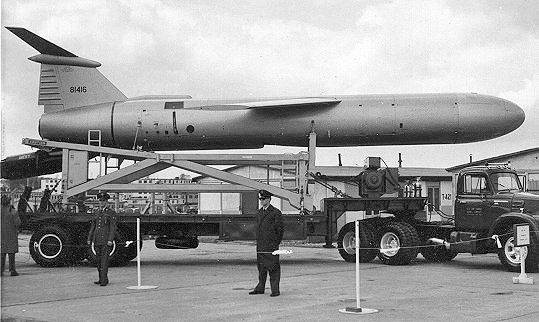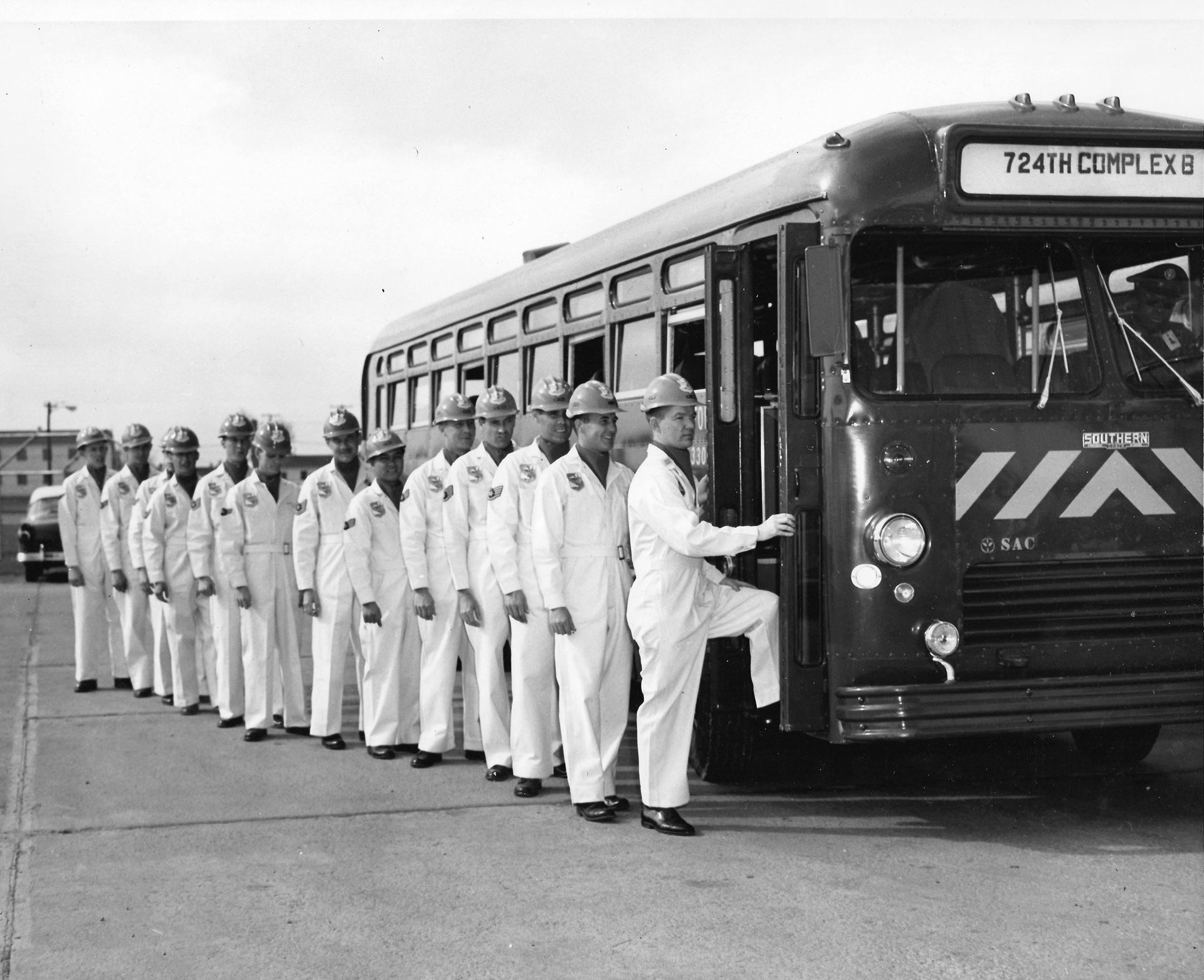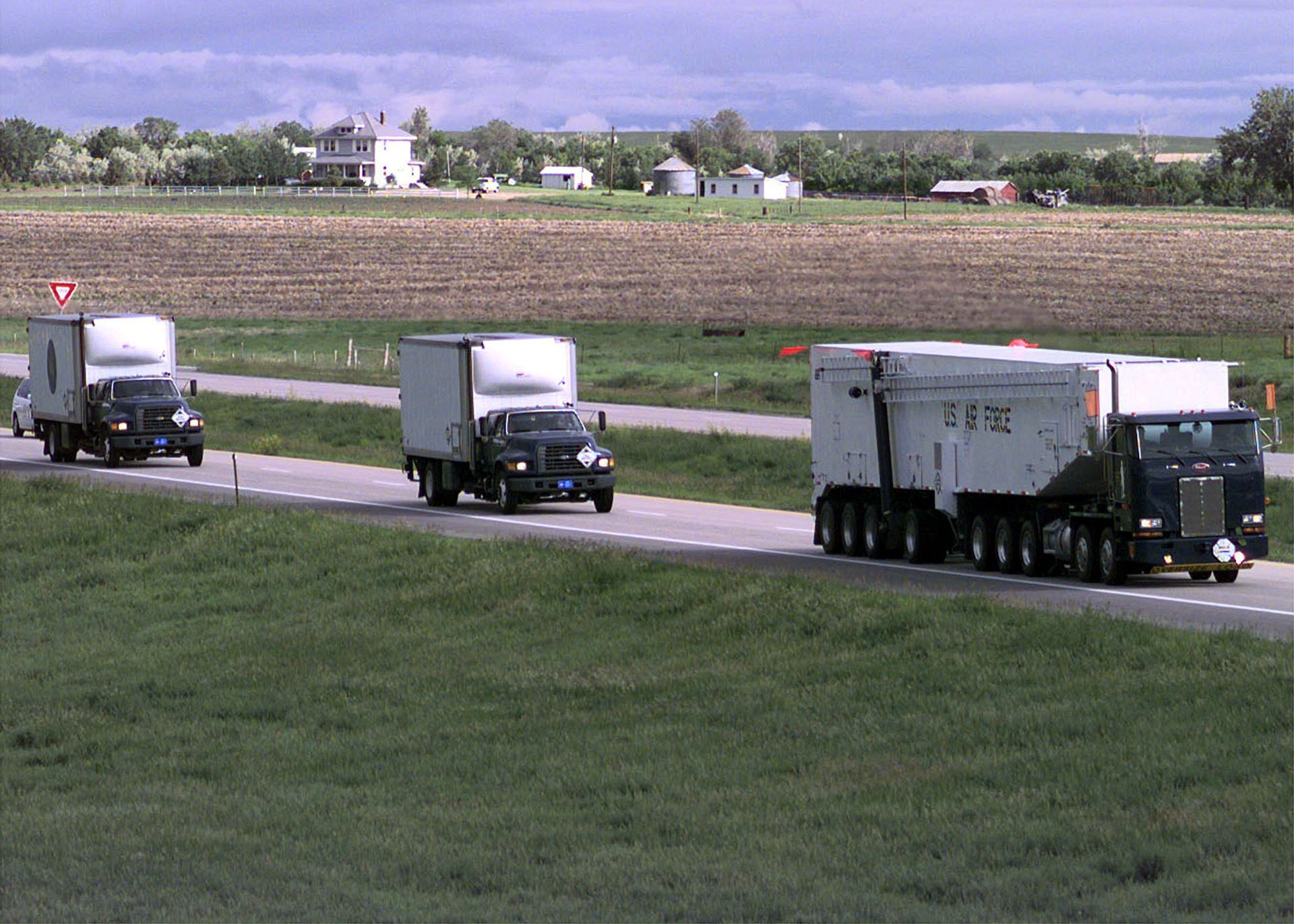Transporting Missiles and Missileers Air Force missiles have required a wide variety of complex transporters and other special purpose vehicles over the years. From the early mobile launchers for Matador and Mace to the transporter erector launcher for the ground launched cruise missile, and all those in between, there have been some innovative vehicles. The AAFM Newsletter has had several articles, including a couple of series about moving missiles and Missileers, and you can find these articles in the newsletter index. Most of the mobile systems were developed with the same goal - to be able to travel away from populated areas, often off-road, to set up, sit on alert and launch when directed. The Matador and GLCM were about 30 years apart in operations, but the concepts were surprisingly similar. Both systems depended on more than just a vehicle to carry the missile, there were other vehicles for launch, maintenance and support equipment. Some were specially constructed for the mission, some were off the shelf commercial trucks and vans. The Atlas and Titan ICBMs required special trailers to transport the missiles from the manufacturer to the operational bases and then to the individual sites. Titan was straightforward, since the two-stage missile was structurally like an aircraft, and could be easily loaded onto special trailers for each stage. The biggest problem in transporting a Titan I or II was to ensure proper clearance under bridges and railroad crossings. The Atlas, on the other hand, had to be kept in stretch mechanically, or pressurized with nitrogen, due to the thin stainless steel skin. The almost 100 foot long trailers even had "drivers" at the rear to steer the rear wheels on tight corners. Both the Atlas and Titan could be transported by a C-133 turboprop, a large four engine aircraft designed for this mission. It was a tight fit, loading either a Titan I first stage or an Atlas aboard the aircraft. Both of these systems required large cranes during installation of the missile in the silos. The Atlas trailer also acted as an erector, but each stage of the Titan I had to be picked up by a large Cole's crane and carefully placed vertically on the elevator platform or atop the first stage. A second crane, the MC-1, was used to stabilize the large crane, as well as to install the reentry vehicle. The liquid propellants required special trailers for liquid oxygen, nitrogen, helium, rocket propellant (RP-1), and the hypergolic propellants used in Titan II. Maintenance also relied on a number of other special and general purpose vehicles. The most visible and unique vehicles in the Minuteman garage were the transporter erectors, the large trailers used to transport a missile to a launch facility and lower the missile into the silo, and the reentry vehicle/guidance and control van for Minuteman I and II, or payload transporter for Minuteman III, used to carry the reentry vehicle and guidance can, or the propulsion system rocket engine, guidance system and reentry system. These special vans are parked directly over an open silo to install the reentry system. Minuteman maintenance also has a number of other special purpose and general use vehicles . Many of the other Air Force missile systems have had special vehicles to transport missiles, install them on aircraft, mobile or fixed launcher or for other purposes. You will find photos of some of these special vehicles in galleries on specific topics. The missile combat crew force in the ICBM business has used a wide variety of modes of travel to the remote missile sites. While most crews, from the earliest days of Atlas, drove to and from alert, that was not always the case. Those who drove in the early days, and even well into the 1970s, weren't provided with high mobility all wheel drive vehicles - not many were available in those days. Most of us drove off the shelf station wagons, Fords, Chevys or Plymouths, painted dark Air Force blue, rear wheel drive, no matter what the weather. For Titan I, someone high up decided that crews and the other 24 hour shift workers should not drive, so each squadron used large, commercial style buses to transport them to and from the sites. On rare occasions, helicopters were used, but the H-19s in use then could only carry four passengers, so that limited their use, combined with their instability in high winds. At least one Atlas unit used U-6 single engine aircraft. Most crew commanders were pilots, so this also filled the "flying time" square" so the pilot qualified for flight pay. However, a fatal crash at Lincoln AFB ended that program. Malmstrom used a C-47, twin-engine aircraft, to fly crews to a runway in the vicinity of several of its easternmost sites, where vehicles were kept for transport to the individual sites. At most of the Minuteman bases, the UH-1helicopters were used for many years to take crews to and from alert to at least some of the sites each day. The biggest improvement for the crew force was the introduction of the all-wheel drive vehicles. |
|



